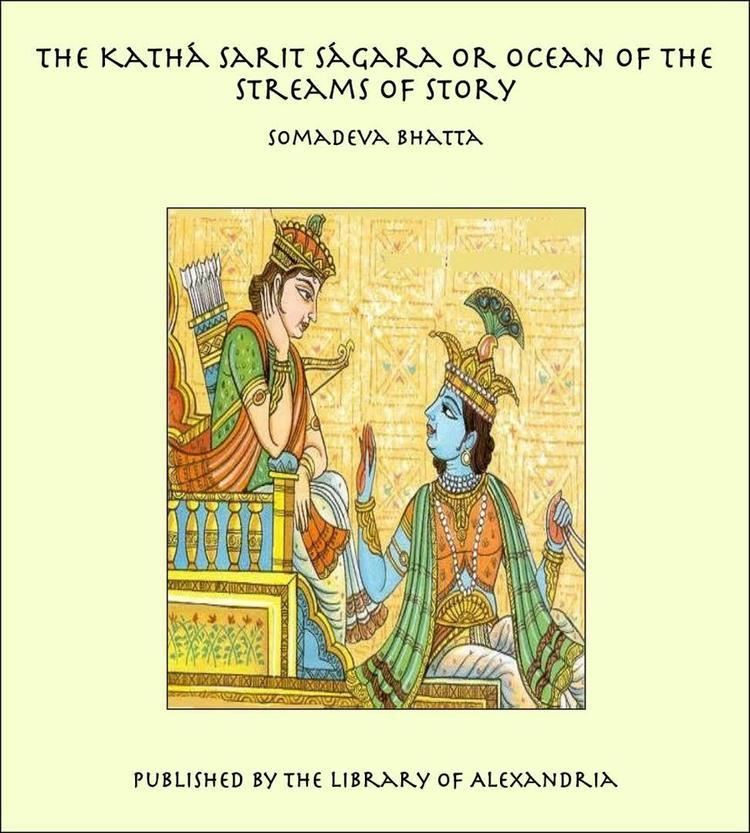8.4 /10 1 Votes8.4
| 4.2/5 Goodreads | |||||||||||||||||||||||||||||||||
 | ||||||||||||||||||||||||||||||||||
Similar Somadeva books, Other books | ||||||||||||||||||||||||||||||||||
The Kathāsaritsāgara (Devanagari कथासरित्सागर "Ocean of the Streams of Stories") is a famous 11th-century collection of Indian legends, fairy tales and folk tales as retold in Sanskrit by a Shaiva named Somadeva.
Contents
Kathasaritsagara is said to have been adopted from Guṇāḍhya's Brihatkatha, which was written in a poorly-understood language known as Paiśācī. The work is no longer extant but several later adaptations — the Kathasaritsagara, Brihatkathamanjari and Bṛhatkathāślokasaṃgraha. However, none of these recensions necessarily derives directly from Gunadhya, each may have an intermediate versions. Scholars compare Guṇāḍhya with Vyasa and Valmiki even though he did not write the now long-lost Brihatkatha in Sanskrit. Presently available are its two Sanskrit recensions, the Brihatkathamanjari by Kshemendra and the Kathasaritsagara by Somadeva.
Content
The work consists of 18 books of 124 chapters and approximately 22,000 ślokas (distichs) in addition to prose sections. The śloka consists of 2 half-verses of 16 syllables each. Thus, syllabically, the Kathāsaritsāgara is approximately equal to 66,000 lines of iambic pentameter; by comparison, John Milton's Paradise Lost weighs in at 10,565 lines. All this pales in comparison to the (presumably legendary) 700,000 ślokas of the lost original Brihatkatha. The principal tale is the narrative of the adventures of Naravahanadatta, son of the legendary king Udayana. A large number of tales are built around this central story, making it the largest existing collection of Indian tales. It also contains early recensions of the Panchatantra in Book 10; and the Vetālapañcaviṃśati, or Baital Pachisi, in Book 12.
The Kathāsaritsāgara is generally believed to derive from Gunadhya's lost Brihatkatha written in the lost Paisaci dialect. But the Kashmirian (or "Northwestern") Brihatkatha that Somadeva adapted may be quite different from the Paisaci ur-text, as at least 5 apparent descendants of Gunadhya's work exist — all quite different in form and content, the best-known (after the Kathāsaritsāgara itself) probably being the Bṛhatkathāślokasaṃgraha of Budhasvamin from Nepal. Like the Panchatantra, tales from the Kathāsaritsāgara (or its related versions) travelled to many parts of the world.
Translations
The only complete translation into English is by Charles Henry Tawney (1837–1922), published in two volumes (1300 pages in all) in 1880 & 1884. This was greatly expanded, with additional notes and remarks comparing stories from different cultures, by Norman Mosley Penzer, and published in ten volumes ("privately printed for subscribers only") in 1924-1928.
Another translation was to be published in seven volumes by the Clay Sanskrit Library, translated by Sir James Mallinson, but it published only two volumes, reaching up to canto 6.8, before the publisher ended operations.
